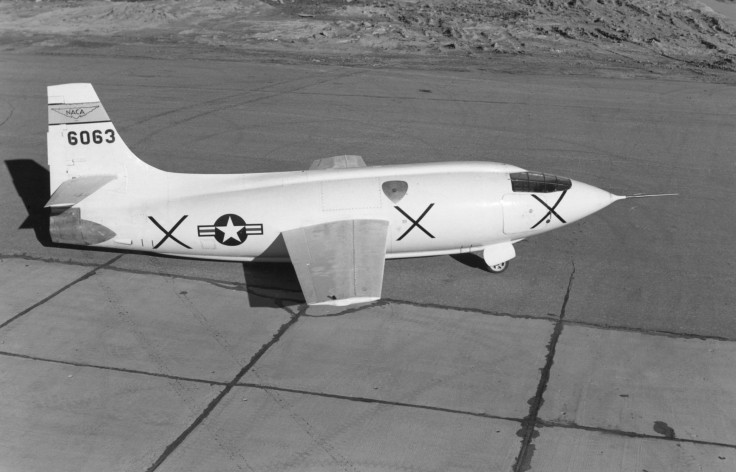Watch Old NASA Footage: YouTube Shows Space Shuttle Launches, Buzz Aldrin Playing Baseball

NASA is uploading hundreds of videos to YouTube so people can more easily access the space agency’s archived footage.
The uploads have been taking place in recent weeks on the channel for the Armstrong Flight Research Center and include a variety of videos — from clips of space shuttles taking off and landing to recordings of scientists installing instruments on a flying laboratory. Not all of the clips are from this century: There is footage, for example, from the 1970s of an aircraft under testing, with colored smoke being used to watch the vortices that are generated by the aircraft’s wings and that continue sweeping around in a circle after the plane has passed through the area.
Another short video dates to the mid-1950s and shows a monoplane called the X-1 launching from a B-29 mothership. The one-seater plane, which NASA notes did not have an ejection seat, was “the first of the rocket-powered research aircraft,” according to the video description. The X-1 was built for the U.S. Air Force and for the National Advisory Committee for Aeronautics, the agency that preceded NASA, and was made as part of an effort to break the sound barrier.
The famous test pilot Chuck Yeager was the first person to break the speed of sound, and he did it in an X-1 in October 1947.
The newly uploaded videos are also organized on the Armstrong center’s website.
Read: This Stunning NASA Art Imagines Our Universe
Not all of the videos have a strictly astronomical feel — there is also footage from 10 years ago when Apollo 11 astronaut Buzz Aldrin, the second man to walk on the moon, threw out the ceremonial first pitch at a Lancaster Jethawks baseball game, during an “Aerospace Appreciation Night.”
Another clip that was recently uploaded includes footage that NASA workers took in the Costa Rican rainforest, showcasing nature and animals like birds, butterflies and frogs.
The video effort comes a few months after NASA launched a new database of still images, videos and audio recordings, which come from many projects and missions across all of the space agency’s centers. There were close to 150,000 items in that database when it launched in March, and all of them are available for download and include descriptions of the files.
Read: These Black Hole Images From NASA Really Suck
Engadget has also pointed out that even SpaceX CEO Elon Musk had complained about how hard it was to use NASA’s website to find this archived footage. People searching couldn’t do it through Google or another search engine; they had to pick through the Armstrong Flight Research Center’s website — back when it was still known as the Dryden Flight Research Center.
© Copyright IBTimes 2024. All rights reserved.




















